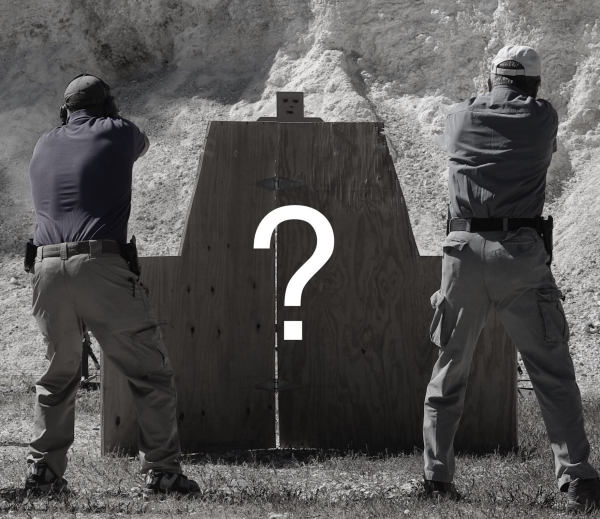My last couple of Wires focused on “could you make the shot?” – whether you have the ability to make accurate hits on the threat, and “would you make the shot?” – the willingness to stop the threat with physical, lethal force. Today, following up on the “could” and “would” is the “should.” Just because you can make the hits, and are willing to shoot, doesn’t necessarily mean that you should fire.

Making the decision to fire on the threat involves a lot of decision making, usually in a very short span of time. You must ask yourself the “hard” questions. First is, “Do you know the details?” Unless you’re absolutely sure about what’s taking place it’s probably best to avoid becoming involved. If you see two people involved in a violent fight what’s really happening? Do you have any idea who’s the “good guy” or “bad guy?” Without knowing the specific circumstances, there’s no way to decide how to solve the problem. Perhaps you see a grown man stomping a tiny infant. Is this enough to reveal who the threat and victim are?
Are you going to contribute to solving the problem or complicate things for those who need to straighten out the trouble? Let’s say you’re inside a store when gunshots erupt somewhere in the aisles. You -- and thirteen others who carry concealed firearms -- draw pistols and start searching for the source of the danger. Law enforcement arrives quickly, but now they must treat anyone with a weapon as a potential threat … just as you would. Unless you are going to be able to be instrumental in dealing with the threat, it’s best to find a safe place that’s easily defended as needed. Now, if Gretchen is in the store somewhere then I’m going to find her. Unless it’s necessary, I don’t go looking for trouble.
Is the situation worth risking your life? There are very few things in life that are worth taking chances that may result in you being seriously injured or killed. Unless this is the case, I’m not getting involved. If the situation requires defending yourself, family/friends or other “special” circumstances then there’s no choice. You’ve got to apply an aggressive defense.
That’s if there’s no doubt that you, or those you’re responsible for, are the focus of the threat. But, as Mas Ayoob teaches, does the attacker have the “Ability” and “Opportunity” that puts you in “Jeopardy?” Someone with a gun, knife, impact weapon -- or a physically superior, stronger person -- definitely has the ability to harm, injure or kill. But, do they have the “opportunity?” A man with a knife that’s ninety feet away will have a difficult time cutting you. (Although keep in mind, they can close that distance in a very short time.). Let’s say the threat is seventy yards away, but armed with a high-power rifle. That’s definitely Opportunity. Ability and opportunity, combined with aggressive actions from the threat puts you in “jeopardy.” If you don’t respond with aggressive force right now, someone is going to be in life-threatening danger.
Fighting is all about decision making at high speed. Some of the decisions can be made in advance. “I will not,” you decide, “be a victim.” Other answers can only be formed once the danger presents. If your response is to fight, just remember that you’ll eventually have to justify what you did by answering the question of “Why?”
Tiger McKee is director of Shootrite Firearms Academy. He is the author of The Book of Two Guns, AR-15 Skills and Drills, has a regular column in American Handgunner and makes some cool knives and custom revolvers. www.shootrite.org or visit Shootrite’s Facebook page for other details.